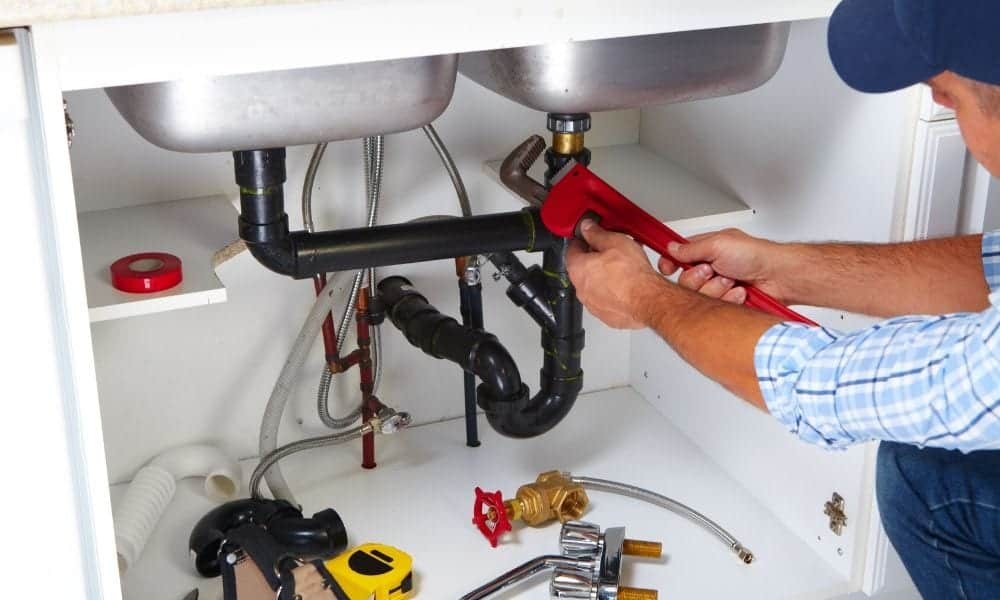Plumbing issues can be a homeowner’s nightmare, but not every problem requires an expensive call to a plumber. Many common plumbing problems can be easily fixed with a little know-how and some basic tools. In this guide, we’ll cover some of the most frequent plumbing issues, how to troubleshoot them, and what steps you can take to fix them yourself. Knowing how to handle minor plumbing repairs can save you both time and money.
-
Leaky Faucets
A leaky faucet is one of the most common plumbing problems that almost everyone experiences at some point. That constant drip not only wastes water but can also increase your water bill.
How to Fix It:
- Turn off the water supply: Before starting any repair, make sure the water supply to the faucet is turned off.
- Disassemble the faucet: Remove the handle and use a wrench to take off the faucet’s cartridge or stem.
- Inspect for damage: Often, a worn-out rubber washer or O-ring is the culprit. Replace these parts and reassemble the faucet.
- Turn the water back on: Once reassembled, turn the water supply back on and test the faucet to ensure the leak is fixed.
-
Clogged Drains
Clogged drains are another frequent issue that can cause slow draining or even standing water. Whether it’s in your kitchen sink, shower, or bathroom, blockages are typically caused by a buildup of soap, hair, food, or grease.
How to Fix It:
- Boiling water: Sometimes, pouring boiling water down the drain can help break up the clog.
- Use a plunger: A good plunge can often dislodge a clog, especially in sinks and tubs.
- Try a drain snake: If a plunger doesn’t work, a drain snake or auger can reach deeper blockages and pull them out.
- Avoid chemical cleaners: While tempting, chemical drain cleaners can damage pipes over time, so it’s best to stick to physical methods.
-
Running Toilets
A running toilet can waste a lot of water—up to 200 gallons a day. This issue is usually caused by problems inside the tank, such as a faulty flapper or an improperly adjusted float.
How to Fix It:
- Inspect the flapper: The flapper is the rubber piece at the bottom of the tank that controls water flow. If it’s worn or doesn’t seal properly, replace it with a new one.
- Adjust the float: The float controls the water level in the tank. If the water level is too high, it can cause the toilet to run constantly. Adjust the float arm so the water stops filling just below the overflow pipe.
- Check the chain: The chain connecting the flapper to the flush lever might be too short or too long. Adjust it so the flapper can fully seal after flushing.
-
Low Water Pressure

Low water pressure can turn a refreshing shower into a frustrating experience. This issue often stems from mineral buildup in faucet aerators or showerheads, or it could be related to leaks in your pipes.
How to Fix It:
- Clean the aerator: If the problem is isolated to a particular faucet, unscrew the aerator (the small screen at the tip of the faucet) and clean out any debris or mineral deposits.
- Check for leaks: Inspect exposed pipes for any signs of leaks, which could be reducing the water pressure.
- Check the pressure regulator: In some homes, a malfunctioning water pressure regulator can cause low water pressure. If cleaning aerators and checking for leaks doesn’t help, you may need to replace the regulator.
-
Water Heater Issues
No one enjoys a cold shower, so when the water heater stops working, it’s a major inconvenience. Common water heater issues include no hot water, water that’s too hot, or unusual noises coming from the heater.
How to Fix It:
- Check the thermostat: Ensure the thermostat on the water heater is set to the correct temperature (around 120°F).
- Flush the tank: Sediment buildup in the water heater tank can cause noises and inefficiency. Flushing the tank once a year can help prevent this.
- Inspect the heating element: If the water isn’t heating at all, it might be due to a faulty heating element, which may need to be replaced.
-
Dripping Showerhead
A dripping showerhead, similar to a leaky faucet, can waste water and increase your utility bills. The most common cause of this issue is worn-out washers or O-rings inside the showerhead.
How to Fix It:
- Turn off the water supply: As with any plumbing repair, ensure the water supply is off.
- Disassemble the showerhead: Unscrew the showerhead and look for the washer or O-ring inside. If it’s damaged or worn, replace it.
- Reassemble and test: After replacing the parts, reassemble the showerhead and turn the water back on to check if the dripping has stopped.
Conclusion
Many common plumbing problems can be easily fixed with the right tools and a little patience. Whether it’s a leaky faucet, a clogged drain, or low water pressure, knowing how to tackle these minor issues yourself can save you money and prevent larger problems down the line. However, if you encounter more serious issues or feel uncomfortable handling a repair, don’t hesitate to call a professional plumber. Tackling small problems early can keep your home’s plumbing system running smoothly.

